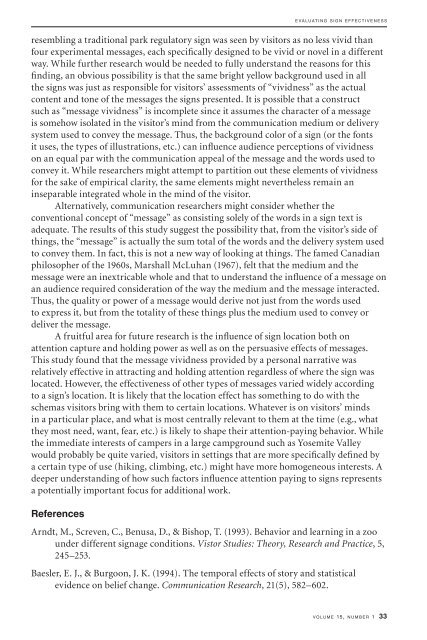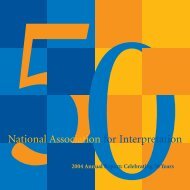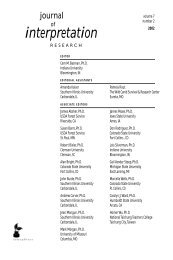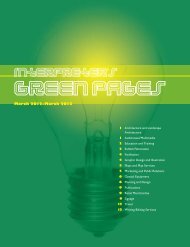interpretation
Volume 15, Number 1 - National Association for Interpretation
Volume 15, Number 1 - National Association for Interpretation
Create successful ePaper yourself
Turn your PDF publications into a flip-book with our unique Google optimized e-Paper software.
e v a l u a t i n g s i g n e f f e c t i v e n e s s<br />
resembling a traditional park regulatory sign was seen by visitors as no less vivid than<br />
four experimental messages, each specifically designed to be vivid or novel in a different<br />
way. While further research would be needed to fully understand the reasons for this<br />
finding, an obvious possibility is that the same bright yellow background used in all<br />
the signs was just as responsible for visitors’ assessments of “vividness” as the actual<br />
content and tone of the messages the signs presented. It is possible that a construct<br />
such as “message vividness” is incomplete since it assumes the character of a message<br />
is somehow isolated in the visitor’s mind from the communication medium or delivery<br />
system used to convey the message. Thus, the background color of a sign (or the fonts<br />
it uses, the types of illustrations, etc.) can influence audience perceptions of vividness<br />
on an equal par with the communication appeal of the message and the words used to<br />
convey it. While researchers might attempt to partition out these elements of vividness<br />
for the sake of empirical clarity, the same elements might nevertheless remain an<br />
inseparable integrated whole in the mind of the visitor.<br />
Alternatively, communication researchers might consider whether the<br />
conventional concept of “message” as consisting solely of the words in a sign text is<br />
adequate. The results of this study suggest the possibility that, from the visitor’s side of<br />
things, the “message” is actually the sum total of the words and the delivery system used<br />
to convey them. In fact, this is not a new way of looking at things. The famed Canadian<br />
philosopher of the 1960s, Marshall McLuhan (1967), felt that the medium and the<br />
message were an inextricable whole and that to understand the influence of a message on<br />
an audience required consideration of the way the medium and the message interacted.<br />
Thus, the quality or power of a message would derive not just from the words used<br />
to express it, but from the totality of these things plus the medium used to convey or<br />
deliver the message.<br />
A fruitful area for future research is the influence of sign location both on<br />
attention capture and holding power as well as on the persuasive effects of messages.<br />
This study found that the message vividness provided by a personal narrative was<br />
relatively effective in attracting and holding attention regardless of where the sign was<br />
located. However, the effectiveness of other types of messages varied widely according<br />
to a sign’s location. It is likely that the location effect has something to do with the<br />
schemas visitors bring with them to certain locations. Whatever is on visitors’ minds<br />
in a particular place, and what is most centrally relevant to them at the time (e.g., what<br />
they most need, want, fear, etc.) is likely to shape their attention-paying behavior. While<br />
the immediate interests of campers in a large campground such as Yosemite Valley<br />
would probably be quite varied, visitors in settings that are more specifically defined by<br />
a certain type of use (hiking, climbing, etc.) might have more homogeneous interests. A<br />
deeper understanding of how such factors influence attention paying to signs represents<br />
a potentially important focus for additional work.<br />
References<br />
Arndt, M., Screven, C., Benusa, D., & Bishop, T. (1993). Behavior and learning in a zoo<br />
under different signage conditions. Vistor Studies: Theory, Research and Practice, 5,<br />
245–253.<br />
Baesler, E. J., & Burgoon, J. K. (1994). The temporal effects of story and statistical<br />
evidence on belief change. Communication Research, 21(5), 582–602.<br />
v o l u m e 15, n u m b e r 1 33












